Farming in the San Luis Valley, Colorado, is tough. The 8,000-square-mile, high-altitude desert has one of the shortest growing seasons in the United States. It is known for strong winds, and in the increasingly common dust storms that plague the region, local farmer Sarah Jones has been unable to pick her children up from school. Two years ago, wind-driven dust so obscured drivers’ vision that it led to a 15-car pile-up on the highway.
“Over the last handful of years, the dustbowl-like events are getting worse and worse,” says Jones. “Last year, I got an emergency weather warning on my phone for the first time…It is not safe to drive. It is not safe to have the kids outside.”
The Valley’s economy relies heavily on agriculture—the region has consistently produced the second-highest yield of fresh potatoes in the U.S. But each dust storm removes precious topsoil from farmers’ fields and potentially damages crops. Jones says the solution is simple: plant more rye.
“We can literally prevent the dustbowl, overnight,” says Jones.
Jones co-founded the Rye Resurgence Project, an organization connecting rye growers in the San Luis Valley with buyers who are interested in its unique terroir—the combination of environmental factors that creates its distinct flavor. In 2024, farmers in the Valley planted 4,000 more acres of rye than the previous year, thanks in large part to these efforts.
Now, on a windy day in the off-season, Jones drives around the Valley surveying at fields. Many are left bare for the winter, with wind-blown soil reducing the visibility above them to zero. But just across the street, over a field planted with rye, the air is clear. The ground holds.
Jones is part of a growing movement of farmers and organizations across the U.S. that see rye as a powerful, low-tech climate solution, one that can pay farmers to build healthier soil, save water, sequester carbon and more. And scaling this solution could start with a simple ask from consumers: drink more whiskey distilled from U.S.-grown rye.
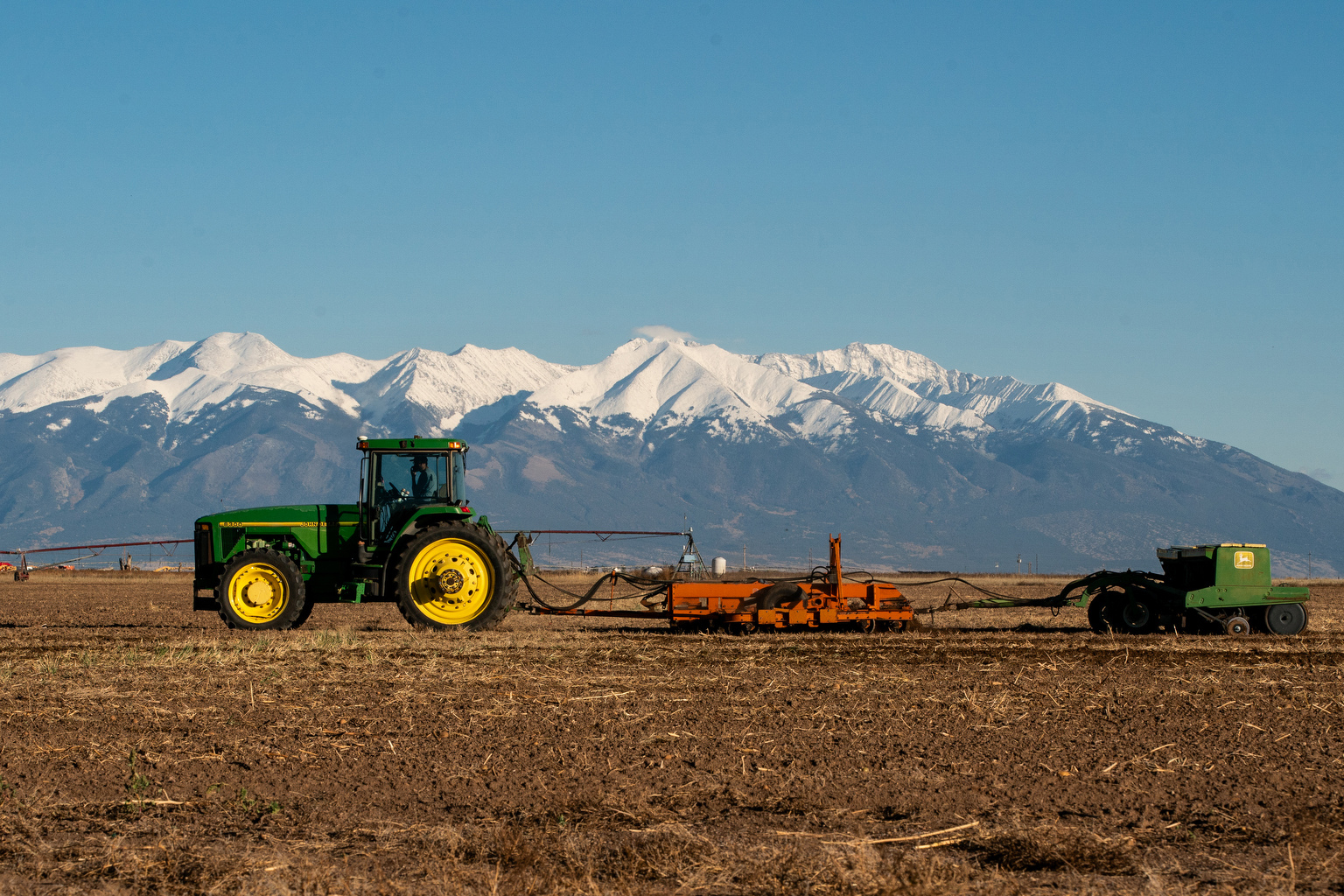
Deep Roots, Big Returns
From 2009 to 2024, the USDA reported a 75 percent increase in acres of rye crop. But only about 18 percent of U.S. rye is harvested. Instead, it is grazed by livestock or kept in the ground to benefit soil that would otherwise be left bare.
Numerous studies show that this practice, called cover cropping, provides important ecosystem services, such as increasing water storage, preventing erosion, enhancing soil biology and suppressing weeds. Improved soil structure and increased soil organic matter create a sponge-like effect that absorbs and retains more water. Meanwhile, living roots and biomass on the field provide natural wind protection.
Rye can grow roots as deep as six feet, significantly deeper than those of other cover crops—creating all the more space for water retention and nutrient absorption. This gives rye an impressive carbon-sequestration potential, too, as research suggests that plants allocate more carbon to their roots than to their above-ground biomass. And rye is hardy. It is one of the few cover crops that can survive harsh winters in the Valley, where temperatures can drop to minus 30 degrees Fahrenheit, or the persistent cold of the Upper Midwest.
“Rye is a mitigation tool,” says Wisconsin farmer Sandy Syburg, who co-founded the nonprofit Rye Revival to help expand U.S. rye production. In recent years, rapidly changing weather patterns have often made it difficult for Syburg to plan his farm work from one day to the next. “Heavy rain events are a challenge. The last two years—and I’ve been farming for 40—I don’t know shit about what I’m doing anymore.”
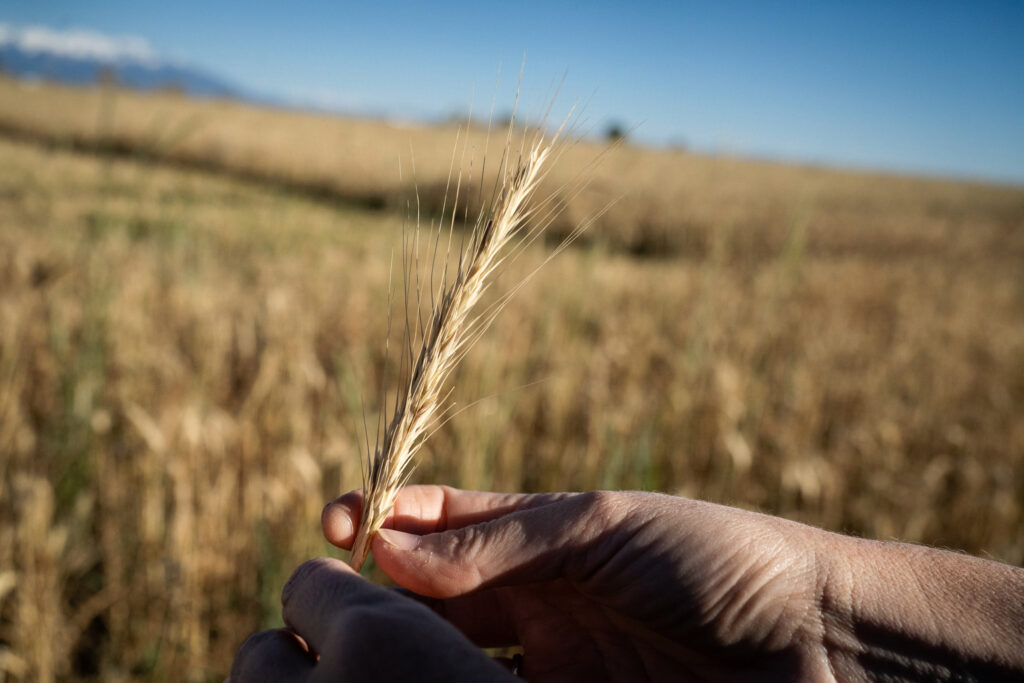

But crops like rye help farmers minimize the damage of extreme weather events. Syburg’s farm provides a stark example. He split one field with a farmer who uses conventional management. The neighbor’s ground can barely infiltrate half an inch of water per hour. Using organic production and planting rye as a cover crop, Syburg’s half infiltrates 40 times more water, a little more than 20 inches per hour. This means his soil and its hard-won nutrients aren’t washed away with each storm.
And preventing those nutrients from washing away can lead to terrific benefits downstream.
According to research from the University of Illinois, using rye as a cover crop reduces nitrogen leaching by 30 percent. Fertilizers and other nutrients that run off from farms in the Midwest have made some waterbodies so hypoxic that they struggle to support life. Here, rye could make a significant difference in a relatively short amount of time.
“Look at what we consume in the United States in just chips and guacamole,” says Syburg. “If you put 10 percent rye in corn chips, and you focus that rye production on the 13 states that directly feed as tributaries into the Mississippi River, you could reduce or eliminate the dead zone in the Gulf of Mexico.”
Despite the potential of cover crops such as rye, they were used on only 4.7 percent of U.S. cropland in 2022. In reality, there’s only so much that farmers can do to improve that rate. In an age when farmers are inundated with messaging about how—and how not—to farm, Jones and Syburg agree that markets are key to increasing its use.
“If a farmer is going to plant it, water it and use diesel on it, and time and energy, they’d also love to get paid for it,” says Jones. “Why would we expect someone to do something that they wouldn’t get paid for?”
Real Rye Rewards
Rye whiskey had been a staple in American liquor cabinets since the country’s inception until Prohibition forced many distilleries to close in the 1920s. Post-Prohibition, bourbon took center stage as federal corn subsidies made it cheaper to produce than rye. But, after the craft cocktail revolution of the 2010s inspired a return to classic drinks, rye whiskey is making a comeback. The original Manhattan recipe, for instance, used rye. From 2009 to 2021, U.S. sales of rye whiskey increased by 1,706 percent.
“There’s no doubt we’re living in a rye renaissance,” says Alan Kennedy, Master Distiller at Redemption Whiskey, who has seen increasing demand for rye among both food and beverage businesses and home consumers.
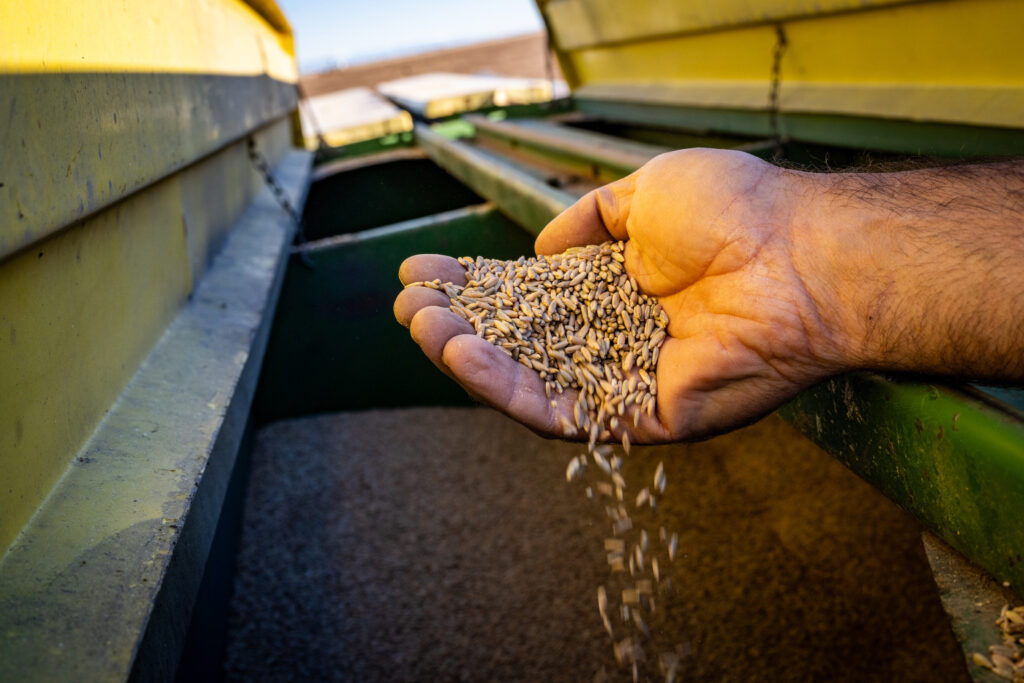

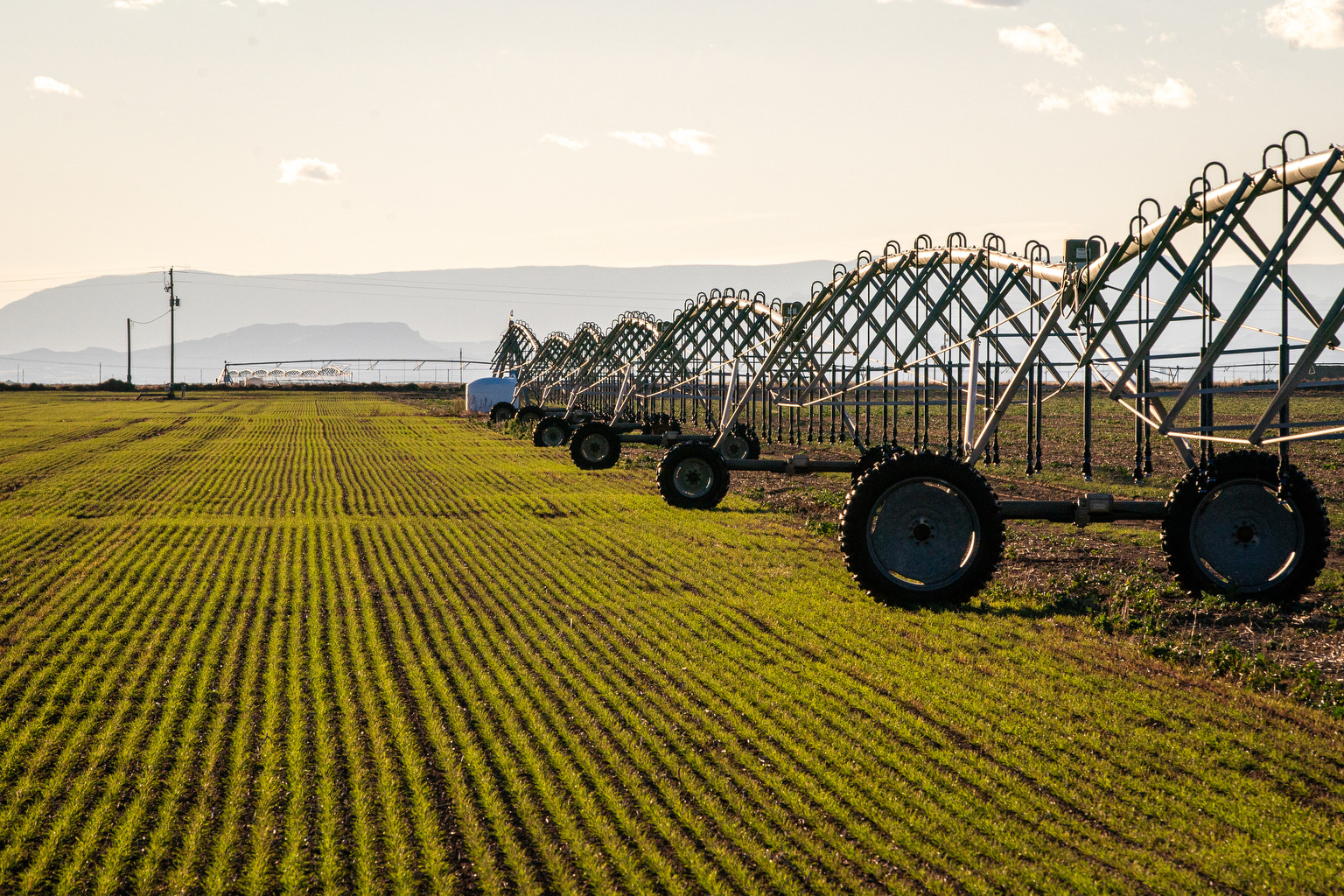

This renaissance depends on a “rye reputation rehabilitation,” according to Jones. The grain is most often associated with rye bread, but in the U.S. it is typically made with caraway seeds, which have a distinctive flavor that overpowers that of the rye. U.S. millers and bakers themselves are often unaware that rye tastes nutty, earthy or even spicy, depending on how it is prepared.
“Rye does not taste like caraway seeds. This misperception of rye is negatively impacting the treatment of our soil,” says Jones. “People might like rye bread, but they don’t want caraway in their cookies.”
Still, Jones found no shortage of chefs, brewers, millers, bakers and home cooks in Colorado interested in working with the grain. Rye Resurgence Project customers are using rye for everything from whiskey and beer to brownies and pizza dough.
“Pretty quickly, I was able to sell 100 percent of what we were growing,” says Jones. That turned what was “once a cover crop to now be a cash crop for us. If little old me, who doesn’t have a background in ag or sales, can sell 100 percent of what we’re growing … The possibilities are endless for all of these farmers.”
Interest in rye is not the problem; it’s getting the grain off fields and into markets.
This story is funded by readers like you.
Our nonprofit newsroom provides award-winning climate coverage free of charge and advertising. We rely on donations from readers like you to keep going. Please donate now to support our work.
Homegrown Potential
“I have farmers trucking the rye halfway across the state of Kentucky to get into a delivery point,” much farther than for staple crops like wheat or corn, says Brian Brandt of American Farmland Trust’s Kentucky Cereal Rye Cover Crop Initiative. “That just increases the cost and the barriers.”
Rye whiskey requires a high-quality grain. Spencer Guinn, who works with Brandt, has been growing Kentucky rye for seven years, but his crop’s moisture content, weight and kernel plumpness have only met distilling standards once. Instead, Guinn often sells rye as cover crop seed for other farmers. Brandt and Guinn say farmers need secondary and tertiary markets to give them confidence to plant more rye when the selectiveness of distillers or millers make those uses infrequent options.
Other markets can also help build regional supply chains so farmers can sell at local grain elevators, which often do not accept a crop unless it is in certain quantities.
“I’d love nothing more than to see McDonald’s put 10 percent rye in a hamburger bun. We’d see hundreds of thousands of acres of rye demand in a very short period of time.”
— Sandy Syburg, Rye Revival
One new market could be livestock feed. There is a growing trend in Europe toward incorporating hybrid rye varieties into pig feed, for example, as research shows positive effects on pig behavior, gut health and feed intake. This could be a boon for the U.S. hog industry—the third-largest global producer of pork—as demand for antibiotic-free production rises.
For many, rye shows great potential to transform landscapes, boost small farm profitability, save water and sequester carbon—not to mention improve human health, as shown in peer-reviewed research, with benefits like reducing inflammation and the incidence of diabetes. Syburg says that craft distillers and artisanal bakeries help, but rye needs “Big Food” to get on board to reach its potential.
“We need to look at meeting eaters where they’re currently eating,” says Syburg. “I’d love nothing more than to see McDonald’s put 10 percent rye in a hamburger bun. We’d see hundreds of thousands of acres of rye demand in a very short period of time.”
But Syburg also emphasizes that rye must be sourced locally to achieve most of these benefits. Right now, the U.S. sources most of its rye from Canada. Turning this cover crop into a cash crop in the U.S. would incentivize farmers to make a significant environmental impact while reaping benefits within their communities.
Jones sees these benefits firsthand in Colorado. She recalls bringing a couple of pounds of freshly milled rye to a popular Denver pizza restaurant, Joy Hill. Within a week, the chefs were developing new pizza crust recipes. Now, on average, the restaurant uses 10 to 15 percent rye in their dough, which Jones says translates to 50 pounds per week of rye flour—and over an acre of soil-protecting rye planted in the San Luis Valley.
“Rye had a really positive impact on [Joy Hill’s pizza] flavor, and when you’re eating that pizza, you’re also helping save soil and the aquifer a few hours away from you in our rural area,” says Jones. “Save the climate by eating pizza. It doesn’t have to be difficult.”
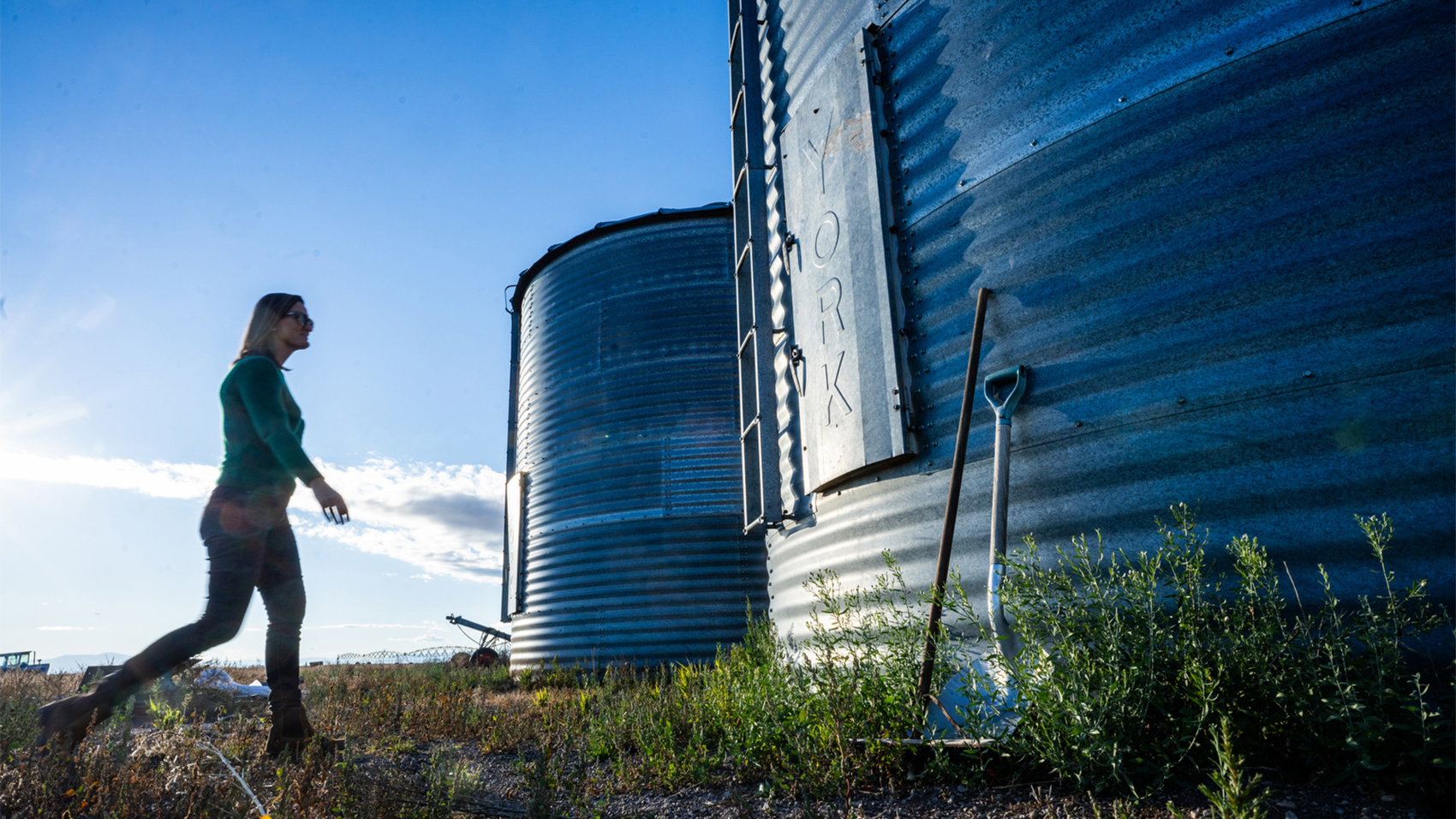

About This Story
Perhaps you noticed: This story, like all the news we publish, is free to read. That’s because Inside Climate News is a 501c3 nonprofit organization. We do not charge a subscription fee, lock our news behind a paywall, or clutter our website with ads. We make our news on climate and the environment freely available to you and anyone who wants it.
That’s not all. We also share our news for free with scores of other media organizations around the country. Many of them can’t afford to do environmental journalism of their own. We’ve built bureaus from coast to coast to report local stories, collaborate with local newsrooms and co-publish articles so that this vital work is shared as widely as possible.
Two of us launched ICN in 2007. Six years later we earned a Pulitzer Prize for National Reporting, and now we run the oldest and largest dedicated climate newsroom in the nation. We tell the story in all its complexity. We hold polluters accountable. We expose environmental injustice. We debunk misinformation. We scrutinize solutions and inspire action.
Donations from readers like you fund every aspect of what we do. If you don’t already, will you support our ongoing work, our reporting on the biggest crisis facing our planet, and help us reach even more readers in more places?
Please take a moment to make a tax-deductible donation. Every one of them makes a difference.
Thank you,
Great Job By Emily Payne & the Team @ Inside Climate News Source link for sharing this story.



